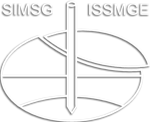Multiphysical numerical modelling of an MICP upscaling experiment with ex-situ hydrolysis
Multiphysical numerical modelling of an MICP upscaling experiment with ex-situ hydrolysis
Microbially induced calcite precipitation (MICP) is an innovative biogeochemical ground improvement technology that can be used in-situ to improve soil stiffness and strength, by precipitating calcite within the soil. Bio-chemo-hydro-mechanical processes are key aspects of this technology, which makes the use of advanced numerical models necessary to optimize the treatment design. In this study, an upscaling experiment was modelled using a multiphysical framework. The upscaling experiment used a novel treatment strategy, based on ex-situ hydrolysis, which required a novel bio-chemical reactive transport formulation. Numerical evaluations in both 2D and 3D were used to properly account for the geometry and injection strategy of the experiment. Modelling results were compared with the experimentally measured properties. Both models showed that the injection pressures during the consecutive injections of 20 m3 of reactive batches could well be replicated. Modelling in 3D increased the understanding of the influence of the applied treatment strategy on the overall precipitation pattern. Overall, the numerical model was capable of capturing the evolution of the precipitation process as a response to the variation of chemical, hydraulic and mechanical conditions, which validates the use of the numerical framework as an effective strategy for understanding, predicting and optimizing the MICP treatment with ex-situ hydrolysis.
S. Ten Bosch; J. Bosch; Dimitrios Terzis; Lyesse Laloui
9th International Congress on Environmental Geotechnics (ICEG2023)
Biogeotechnics and Bioremediation
https://doi.org/10.53243/ICEG2023-442
